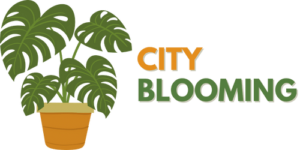The Basic Principles Of City Blooming
The Basic Principles Of City Blooming
Blog Article
City Blooming Fundamentals Explained
Table of ContentsThe Best Strategy To Use For City BloomingA Biased View of City BloomingExamine This Report about City Blooming10 Easy Facts About City Blooming DescribedNot known Factual Statements About City Blooming
Intrigued in expanding food up for sale in the City of Chicago? Considering beginning an area garden? Adjustments to the Chicago Zoning Regulation allow agricultural uses like neighborhood gardens and urban ranches in several parts of the city. Below is a list of often asked questions regarding the rules and guidelines that farmers should take into consideration when intending an urban agriculture job.
The zoning amendment does not modify any kind of other codes managing composting, structure permits, buying or renting City possessed home, organization licenses or environmental contamination. There are existing codes that control these issues and they continue to be completely result and might be suitable to your task. Area gardens are generally had or handled by public entities, public organizations or community-based companies and maintained by volunteers.
Urban farms grow food that is intended to be sold, either on a nonprofit or for-profit basis. As a result of their commercial function, metropolitan ranches call for an organization permit. Yes. A community yard is permitted to market excess generate that was expanded on site if the sales are accessory or subordinate to the garden's primary purpose described above.
All About City Blooming
The amount of compost product can not surpass 25 cubic lawns at any type of offered time according to the criteria in 7-28-715 of the City's Municipal Code. Since the dirt at most new garden websites needs changing, garden compost, dirt, timber chips, or various other materials can be acquired to build or improve the expanding room.

If a structure license is called for after that the hoophouse will be taken into consideration an accessory building. You can learn even more regarding the structure authorization requirements by speaking to the Division of Buildings. The 25,000-square-foot size limit is intended to avoid a single community yard from controling a provided block or interfering with the block's existing residential or industrial personality.
The limit does not apply to gardens situated in Public Open Area (POS) districts. Can there be even more than one neighborhood yard that is 25,000 square feet on a single block? Fencing is not called for, nonetheless, yards that have big parking areas may be required to install fencing or other landscaping functions.
The Best Guide To City Blooming
B1 & B2 districts need that all business use tasks be carried out inside. R districts restrict commercial activity. The laws show the function and intent of the Zoning Code. Is fence required for urban farms? Yes. Fencings might be required, in addition to landscape design and testing, for certain vehicle parking areas and outside job or storage space locations depending on location and the certain activity taking location.
Urban ranches require building authorizations and zoning authorizations prior to construction (container and raised bed gardening etc.). Other forms of city testimonial might be needed depending on certain frameworks, activities, size, landscaping, licensing, public heath and stormwater monitoring problems.
The Department of Service Matters and Consumer Security can assist figure out the particular type of organization certificate that's required. Off street car parking is required for a lot of business tasks in Chicago. The needed number of vehicle parking spaces is based discover this on the number of staff members working on site and not the square video footage of the expanding space.
City Blooming for Beginners

An urban farm can sell garden compost product produced on site, nevertheless, the procedure must comply with the regulations in 7-28-715 of the Chicago Municipal Code. Aquaponic systems are permitted indoors on metropolitan ranches in many zoning districts.
Approximately 5 hives or colonies of honey might be maintained as an accessory use. However, beekeepers need to register with the Illinois Department of Agriculture. To learn more concerning the proposed zoning amendment you might contact the Department of Housing and Economic Development, Bureau of Preparation and Zoning at 312.744.8563.
Farming in cities and city areas A city farm in Chicago. Urban agriculture describes different methods of cultivating. https://www.intensedebate.com/people/cityblooming1, handling, and distributing food in city locations. The term also relates to the location activities of pet husbandry, tank farming, beekeeping, and horticulture in a metropolitan context. Urban agriculture is differentiated from peri-urban agriculture, which occurs in rural locations beside suburban areas.
Getting My City Blooming To Work
It can entail an activity of organic farmers, "foodies" and "locavores", who seek to form social networks based on a common values of nature and area holism. These networks can create by way of formal institutional assistance, coming to be integrated right into local community planning as a "transition community" activity for sustainable metropolitan advancement.
The extra direct accessibility to fresh vegetable, fruit, and meat items that may be understood with urban farming can improve food safety and security and food security while reducing food miles, leading to lower greenhouse gas emissions, therefore adding to environment adjustment mitigation. Some of the initial proof of urban farming originates from Mesopotamia.
Report this page